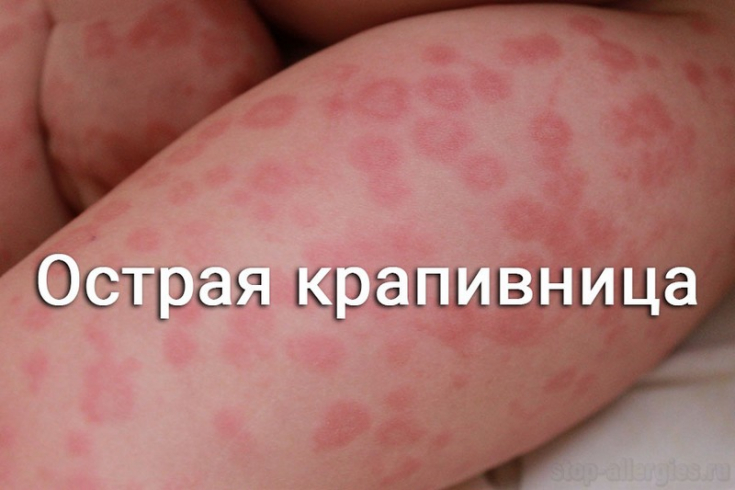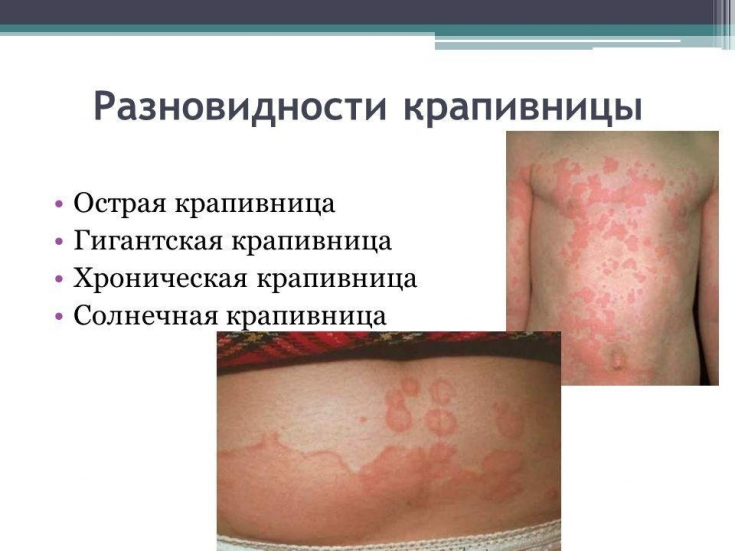At least 20-25% of people have had hives at least once in their lives. Unlike many nosologies, the diagnosis and treatment of which cause controversy and discussion, the approaches to therapy in case of urticaria in the world are almost the same.
But if the urticaria is chronic or does not respond to first line treatment, therapy can be difficult for many dermatologists.
Estet-portal.com has prepared a complete review of information on the mechanisms of occurrence, methods of diagnosis and treatment of urticaria in children.
Symptoms of Urticaria in Children
Urticaria − it is a skin eruption that is raised above the surface, has an erythematous base, is usually accompanied by itching and is described by patients as "bubbles".
Follow us on Instagram!
They occur due to a short extravasation of blood plasma into the dermis. Urticaria is different: in the form of both single and multiple and prone to merging elements, it resembles a nettle burn, a bee sting. Rashes quickly pass (most often within a day), leaving no pathological changes in the skin. If others appear, they are localized elsewhere.
Methods for preventing atopic dermatitis in children
Urticaria is a constant companion of itching, but pain, as well as damage to other organs and systems, in particular joints, is not typical for it. There are acute (rashes persist up to 6 weeks) and chronic (more than 6 weeks) urticaria, as well as a recurrent form of the disease.
Causes of hives in children
Acute urticaria in children is most often caused by infectious agents (viruses, bacteria, parasites), drugs, much less frequently − Food. Sometimes its appearance is provoked by water. Due to the significant variability of provoking factors, in the vast majority of cases, it is not possible to determine the cause, unfortunately, therefore, a diagnosis of idiopathic urticaria is made.

Depending on the causes, there are three mechanisms for the development of urticaria:
1) IgE-mediated (aeroallergens, contact allergens, food allergens, insect venom, drugs, parasitic infections);
2) non-IgE-mediated (aeroallergens (proteases), autoimmune diseases, bacterial infections, cryoglobulinemia, fungal infections, lymphoma, vasculitis, viral infections);
3) non-immunologically mediated (contact allergens, fever, food pseudo-allergens, solar radiation, mastocytosis, drugs (direct mast cell degranulation), physical stimuli (cold, heat, pressure, vibration), water).
Regardless of the trigger that starts the process, the main mechanism for the appearance of blisters is local edema as a result of extravasation (exit of blood plasma from the vessels). The more intense it is, the more pronounced the swelling will be.
According to the recommendations of the American Family Physicians Association, first of all, it is necessary to exclude anaphylaxis in patients with urticaria (level of evidence C): evaluate vital signs and symptoms in the respiratory, cardiovascular, nervous systems, gastrointestinal tract.
Toxicoderma: causes, symptoms, treatment, prevention
If urticaria is accompanied by swelling of the tongue or throat, difficulty breathing, or low blood pressure, suspect anaphylaxis (swelling may be visible). This necessitates the urgent administration of adrenaline to the child and a medical examination in a hospital. Self-administration of epinephrine in pens in emergency situations is also available today, this should be taught to children in case of a tendency to anaphylaxis.
Approaches to the treatment of urticaria in children
The basis of symptomatic therapy in the presence of urticaria in children without anaphylaxis is H1-blockers of the second generation (A), for example, loratadine. They are advised to use instead of H1-blockers of the first generation. With comparable effectiveness, second-generation antihistamines are safe, they do not cause an anticholinergic effect, they are not addictive.
Fragile skin: clinical picture, diagnosis and treatment of epidermolysis bullosa
If the recommended dose of H1-blockers of the second generation does not improve and control the symptoms of urticaria, the dose can be increased by 2-4 times (C). This strategy is not suitable with H1-generation 1 blockers as it is associated with an increased risk of side effects in pediatric urticaria.

For severe cases of urticaria, short-course systemic corticosteroids (C) are used: although the evidence for this approach is limited, it is widely used in practice. If urticaria is chronic or does not respond to first line treatment, therapy may additionally include H1-blockers of the 1st and 2nd generations, H2-blockers (ranitidine, famotidine) and leukotriene receptor antagonists (B).
If the course of urticaria in children is uncomplicated and is not accompanied by other symptoms other than itching, treatment can be done at home. Within a few hours or days, the symptoms disappear. If the rash does not disappear for >7 days, you should definitely consult a doctor.
Lichen planus treatment: when the disease affects the smallest







Add a comment